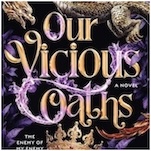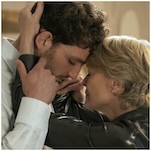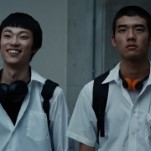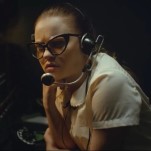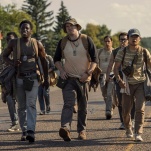The Best ’80s Movies on Netflix
Photo by Orion Pictures/Getty Images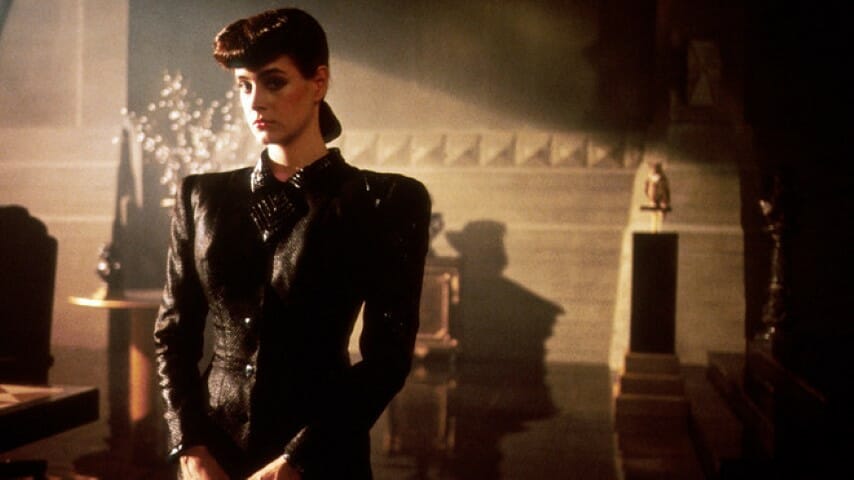
For all the harm that was done in the 1980s, from deregulation to the drug wars, the decade did deliver the age of the blockbuster, and several of its best examples are streaming on Netflix right now. Directors such as Spike Lee, Ridley Scott, Rob Reiner, Harold Ramis, Barry Levinson and Ivan Reitman delivered grand adventures, prestige drama and silly comedy that still hold up four decades later. It was the age of the numbered sequel, and the drive to make every film bigger and bolder than the previous. It’s no surprise that the ’80s movies on Netflix get a lot of attention.
These films are likely to leave Netflix soon, so enjoy your blockbusters while you can. Here are the best movies from the 1980s you can stream on Netflix right now.
Blade Runner
Year: 1982
Director: Ridley Scott
Stars: Harrison Ford, Rutger Hauer, Sean Young, Edward James Olmos
Rating: R
Just as The Road Warrior set the look and tone for countless post-apocalyptic cinema-scapes to follow, so too did the world of Ridley Scott’s dingy, wet and overcrowded Blade Runner set the standard for the depiction of pre-apocalyptic dystopias. But he also had Harrison Ford, Sean Young, Rutger Hauer and a cast of actors who all bring this Philip K. Dick-inspired tale of a replicant-retiring policeman to gritty, believable life. Beneath the film’s impressive set design and inspired performances lies a compelling meditation on the lurking loneliness of the human (and, perhaps, inhuman) condition that continues to resonate (and trigger new creations, like Villeneuve’s Blade Runner 2049) to this day. —Michael Burgin
The Thin Blue Line
Year: 1988
Director: Errol Morris
Rating: NR
A little after midnight on Nov. 28, 1976, Dallas police officers Robert Wood and Teresa Turko made a routine traffic stop for a car driving without headlights. When Wood approached the vehicle, the driver pulled a handgun and shot him five times. The car sped off into the night while Turko fired hopelessly in its wake and Wood died at her feet. A cop killer was on the loose in Dallas. Turko’s recollections of the driver were meager, and 50 investigators worked through the sparse clues without a single witness. But less than a month later, on Dec. 21, Dallas police arrested Randall Dale Adams, a 28-year-old itinerant laborer from Ohio. Though Adams claimed his innocence, a jury found him guilty and the judge handed him the death sentence. The man once branded in court as “Charles Manson” was safely locked away. Dallas breathed again. Nine years later, in 1985, a documentarian named Errol Morris drifted into town from New York. Morris had never heard of Randall Dale Adams; he was in Dallas to speak to a doctor. By the time Morris left three years later, he had freed an innocent man, identified a murderer, uncovered widespread corruption and earned death threats, law suits and debt. He had also made one of the finest documentary films of all time—a nimbly stylized and obsessive pursuit of truth; a study in and a shrug to the pitfalls of myopia; the Serial podcast before podcasts ever existed; an epic story of life, death and the misuse of power that has repercussions to this day. He called it The Thin Blue Line. —Neil Forsyth
The Karate Kid
Year: 1984
Director: John G. Avildsen
Stars: Ralph Macchio, Pat Morita, Elisabeth Shue, William Zabka
Rating: PG
Ralph Macchio’s crane-legged Karate Kid would become an icon of the ’80s, as would Pat Morita as Mr. Miyagi, the sensei who trains the bullied Daniel LaRusso in martial arts. Although many of the scenes can feel a little worn and trope-laden, that’s mostly due to how much the film has been copied in the years since its release. It was the sort of feature that defined karate to an entire generation of young kids and must have inspired countless dojo openings and yellow belt ceremonies. It also features one of the great villains of ’80s cinema in the merciless Cobra Kai coach, Sensei John Kreese: “Sweep the leg, Johnny.” —Josh Jackson
Do the Right Thing
Year: 1989
Director: Spike Lee
Stars: Danny Aiello, Ossie Davis, Ruby Dee, Richard Edson, Giancarlo Esposito, Bill Nunn, John Turturro, Samuel L. Jackson
Rating: R
Do The Right Thing, Spike Lee’s brutally direct masterpiece about America’s fraught race relations, compacted within a block of Bed-Stuy during the hottest day of a 1989 summer, might be hypnotically entrenched in late ’80s aesthetic and style, but its tragic breakdown of racial conflict is timeless. Like a master manipulator of tone and tension, Lee meticulously turns up the heat until the inevitable explosion tears apart the society with which Lee’s spent the course of the movie making us fall in love. Tragedy expands tenfold. Powered by amazing performances from a great ensemble cast—from established heavy hitters like Ossie Davis, Danny Aeillo and Ruby Dee, to then-newcomers Martin Lawrence, Samuel L. Jackson and John Turturro—and Ernest Dickerson’s scorching cinematography, Do The Right Thing is one of those rare achievements that manages to be equal parts hilarious and devastating. It’s certainly one of a handful of quintessential American films. —Oktay Ege Kozak
Silverado
Director: Lawrence Kasdan
Year: 1985
Stars: Kevin Kline, Scott Glenn, Rosanna Arquette, John Cleese, Kevin Costner, Brian Dennehy, Danny Glover, Jeff Goldblum, Linda Hunt
Rating: PG
Lawrence Kasdan’s winning homage benefited from a sterling ensemble cast (Scott Glenn, Kevin Costner, Kevin Cline, Danny Glover, Brian Dennehy, John Cleese, Jeff Goldblum, Rosanna Arquette), keen pacing—both in action and humor—and an all-in approach to the classic Western. The traditional motifs are all there as a quartet of cowboys treks to the film’s namesake town and helps its citizens fight back against corrupt powers that be. From fraught duels to wagon trains and cattle stampedes, Silverado is neither revisionist nor original, but it’s terrifically energetic and fun, not to mention beautifully polished in production. —Amanda Schurr
She’s Gotta Have It
Year: 1986
Director: Spike Lee
Stars: Tracy Camila Johns, Spike Lee, John Canada Terrell, Tommy Redmond Hicks
Rating: R
An explosively frank feature debut that immediately announced Lee’s brave, fresh new voice in American cinema, She’s Gotta Have It, shot like a documentary, is a levelheaded exploration of a young black woman named Nola (Tracy Camilla Johns) trying to decide between her three male lovers, while also flirting with her apparent bisexuality, in order to, first and foremost, figure out what makes her happy. What’s refreshing about the film is that Lee always brings up the possibility that “none of the above” is a perfectly viable answer for both Nola and for single women—a game changer in 1986. The DIY indie grainy black-and-white cinematography boosts the film’s in-your-face realism. —Oktay Ege Kozak
Grave of the Fireflies
Year: 1988
Director: Isao Takahata
Stars: Tsutomu Tatsumi, Ayano Shiraishi, Yoshiko Shinohara, Akemi Yamaguchi
Rating: NR
Isao Takahata’s Grave of the Fireflies is the harrowing story of two children whose lives are left devastated by the 1945 firebombing of Kobe. Adapted from the autobiographical story of Akiyuki Nosaka, the film follows Seita, a young Japanese boy forced to care for his younger sister Setsuko in the wake of a devastating Allied attack that leaves his hometown in ruins. To describe the sum of their tragedies as “horrifying” feels like a gross understatement. The horror of Grave of the Fireflies is not reliant on brooding over callous acts of violence or fixating on the macabre, but rather on the heart-wrenching futility of Seita and Satsuko trying desperately to cling to some shred of normalcy in a world devoid of peace and security. Whether it’s the scene of Seita setting eyes on his mother for the first time after the firebombing, or Satsuko inadvertently stumbling across a corpse while playing at the beach, the film raises these children’s hopes of escaping a living hell on earth as quickly as it dashes them. The film is extraordinary in that it shows the audience, with no uncertainty, that these children will perish and somehow through its hour-and-a-half running time compels the viewer to hope that this fate can be averted. Grave of the Fireflies is a chilling portrait of the fragility of human life when confronted by the indifferent brutality of an uncaring world, a film utterly unlike anything Studio Ghibli had produced before or since. Tragic in the truest sense of the word, Grave of the Fireflies is not only one of the greatest films the studio has ever produced, but unmistakably one of the greatest anime films of all time.—Toussaint Egan
Mobile Suit Gundam: Char’s Counterattack
Year: 1988
Director: Yoshiyuki Tomino
Stars: Toru Furuya, Shuichi Ikeda, Hirotaka Suzuoki, Maria Kawamura, Nozomu Sasaki, Koichi Yamadera
Rating: TV-14
The first Gundam theatrical film and final chapter in the original saga begun in 1979 with the “Universal Century Timeline” of the Mobile Suit Gundam TV series, Char’s Counterattack has the weight of three seasons of TV behind it. Yoshiyuki Tomino, creator of the Gundam series, directed and wrote the film, adapting it faithfully from his novel, Hi-Streamer. Widely considered the best film in the Gundam franchise, Char’s Counterattack is most successful at wrapping up the 14-year rivalry between the “hero” of the Earth Federation, Amuro Ray, and the leader of Neo-Zeon, Char Aznable. The story involves a classic Gundam dilemma: Char’s Neo-Zeon force attempts to drop an asteroid filled with nuclear weapons onto Earth, which would free the colonies from the yoke of oppression by their rivals, the Earth Federation, and kill everyone on Earth in the process. As with all of the best Gundam tales, Tomino approaches the story from a hard sci-fi point of view, clearly laying out the science behind things like giant mobile suits and “newtypes” (humans that have evolved to acquire psychic abilities). Tomino carefully lays out the reasoning behind Char and Amuro’s passions and hatreds, not allowing the viewer to choose a clear side. Gundam series have always been willing to take on discussions about the horrors of war and how mankind, for all its advancements, never seems to be able to free itself from humanity’s baser instincts. Char’s Counterattack attempts this as well, yet it’s mostly concerned with wrapping up the rivalry between Amuro and Char—and on that note, it succeeds wildly. Featuring gorgeous, tense fight sequences set in space, an excellent soundtrack by Shigeaki Saegusa, and some of the most lauded Gundam designs in the history of the franchise, the film is inarguably one of the high points of the Gundam Universe. One downside: If you don’t have the investment of spending hundreds of episodes of television with these characters, the plot can be confusing, and Char/Amuro’s ending will likely not resonate as strongly. Regardless, Char’s Counterattack remains a key moment in the Gundam universe, one still worth checking out almost 30 years later. Hail Zeon!—Jason DeMarco
















